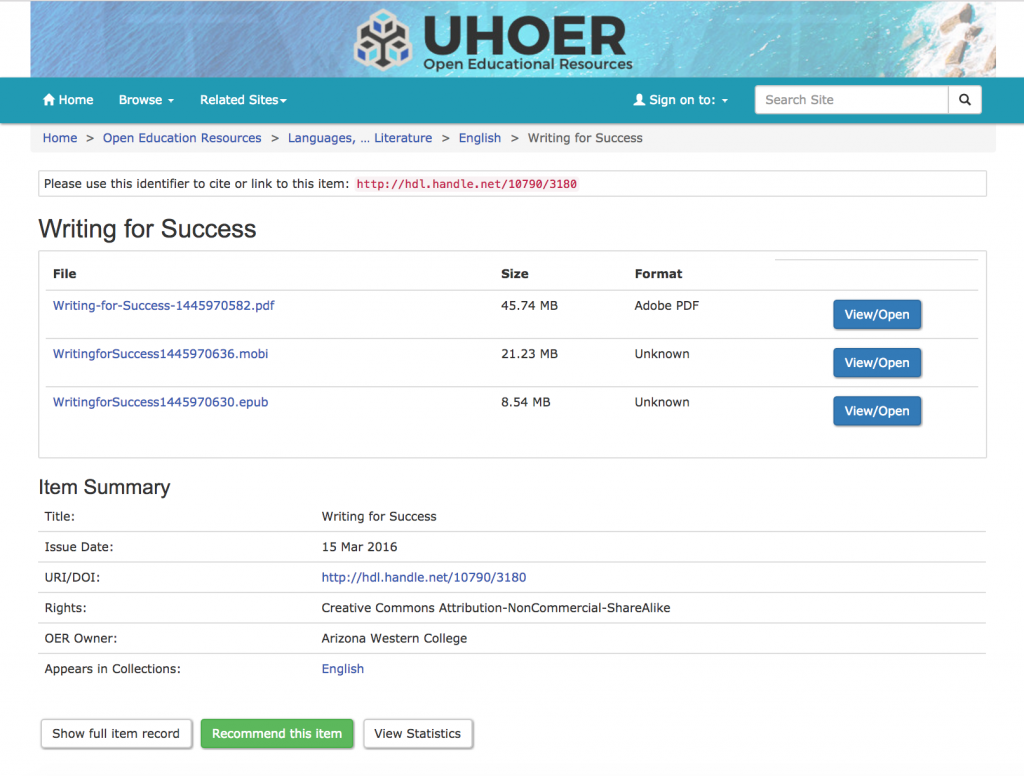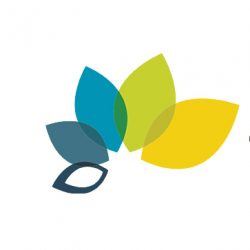Learning Objectives
By the end of this lesson, you will be able to:
- Download an OER from the UH OER Repository
- Assess the technical openness of an OER (ALMS framework)
Introduction
It is often said that OER are, “free like puppies,” implying that there may be no up front costs, but that OER require care and attention to be happy. We can safely assume that having some knowledge pet care would help us better care for our puppy. Analogies aside, your effectiveness working with OER and advising others in their work will depend on having basic knowledge of common instructional design practices and being able to work with digital media files.
This section will offer basic guidance in understanding the technical side and workflow processes for developing OER.
The ALMS framework
As David Wiley explains on the opencontent.org definition page, CC licenses give us permissions to exercise the 5 R’s (reuse, revise, remix, redistribute, retain), but poor technical choices can make open content less open (and thus, harder to work with).
The ALMS Framework provides a way of thinking about those technical choices and understanding the degree to which they enable or impede a user’s ability to engage in the 5R activities permitted by open licenses.
The framework includes four buckets (or whichever your preferred container is) that questions about the technical openness of an OER likely fit into. Here are the descriptions of each bucket.
(This material is based on original writing by David Wiley, which was published freely under a Creative Commons Attribution 4.0 license at http://opencontent.org/definition/)
Access to Editing Tools
Is the open content published in a format that can only be revised or remixed using tools that are extremely expensive (e.g., 3DS MAX)? Is the open content published in an exotic format that can only be revised or remixed using tools that run on an obscure or discontinued platform (e.g., OS/2)? Is the open content published in a format that can be revised or remixed using tools that are freely available and run on all major platforms (e.g., OpenOffice)?
Takeaway: Can you edit the OER without the need for specialized or expensive tools?
Level of Expertise Required
Is the open content published in a format that requires a significant amount technical expertise to revise or remix (e.g., Blender)? Is the open content published in a format that requires a minimum level of technical expertise to revise or remix (e.g., Word)?
Takeaway: Would most faculty be able to edit the OER at their current skill level?
Meaningfully Editable
Is the open content published in a manner that makes its content essentially impossible to revise or remix (e.g., a scanned image of a handwritten document)? Is the open content published in a manner making its content easy to revise or remix (e.g., a text file)?
Takeaway: Can all parts of the OER be edited?
Self-Sourced
It the format preferred for consuming the open content the same format preferred for revising or remixing the open content (e.g., HTML)? Is the format preferred for consuming the open content different from the format preferred for revising or remixing the open content (e.g. Flash FLA vs SWF)?
Takeaway: Can you edit the OER directly or is a separate editable file needed?
Using the ALMS framework
Like with any framework or set of guidelines, the usefulness of the ALMS framework vary. At the very least it is important to understand the kind of technical aspects to be aware of when considering which OER can be easily incorporated into your work. Here is an example of a simple application of the ALMS framework on an OER in the UH OER repository:
Writing for Success https://dspace.lib.hawaii.edu/handle/10790/3180

Go ahead and take a look at the item record. You’ll see the persistent identifier (for citation purposes), the license on the content, ownership metadata, and more. If the content has been uploaded in multiple formats, each of these will be presented to you here.
But how technically open is it? Which file format do we want to download?
The ALMS framework applied to this work in a way that helps us understand the technical openness of this OER might look somethings like this:
Access to editing tools: The content is available in PDF, which isn’t usually editable without Adobe Acrobat Pro. But there is an ePub version that can be ingested by Pressbooks as well as edited with open source tools like Calibre. The PDF could also be scraped (copied from the screen) and pasted into a simpler format such as a Word document, which could be very time consuming. So, we can say that the basic editing tools are available at no or low cost.
Level of expertise required: Editing this OER in Pressbooks or Calibre would require some knowledge of HTML, the markup formatting used for content on the Web. Additionally, editing this book may require file management as the chapters exist as separate files in the ePub or HTML version. If the content were placed in a Word file (as mentioned above), editing could be simplified further.
Meaningfully editable: The OER content is fairly flat (primarily text, no embedded media) and all content appears to be editable. There aren’t any features I would be concerned about being able to edit.
Self-sourced: The ePub file is self-sourced, so at minimum we have one read-and-edit file available to us.
When in doubt about the effort required to edit an OER you find, it may be worth searching the Web for other copies or instances of the OER that have been converted to a friendlier file format. For instance, many of the OpenStax OER textbooks have been ported into Pressbooks so that they can be easily edited and then exported to a variety of formats.
Knowledge Check
[h5p id=”11″]
[h5p id=”12″]
[h5p id=”13″]
[h5p id=”14″]

